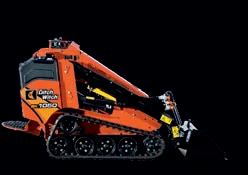TheConcernGrowing
A PUBLICATION OF THE OHIO LANDSCAPE ASSOCIATION









Greg Botson Certified Insurance Counselor

CAMERON MANERI
Cleary Brothers Landscaping










Greg Botson Certified Insurance Counselor

CAMERON MANERI
Cleary Brothers Landscaping
Some great topics were discussed at this year’s Great Lakes Leadership Conference in Long Island, New York, one of which was the importance of volunteerism within associations. The OLA has numerous volunteer opportunities available when it comes to putting on events, or within our committees. For those of you who may be wondering about volunteering and joining in on all the fun, I want to discuss some of the personal benefits that can be gained by volunteering.
Volunteering within organizations like the Ohio Landscape Association (OLA) plays a crucial role in enhancing community engagement, promoting environmental stewardship, and fostering professional development. As one of Ohio’s leading associations dedicated to the landscape and horticultural industry, the OLA provides a platform for individuals and businesses to connect, collaborate, and contribute to the education and development of Ohio’s landscape industry.
Volunteering with the OLA is an avenue for promoting environmental stewardship. The association emphasizes sustainable practices in landscaping and gardening, which are essential for preserving Ohio’s natural resources. Volunteers to the educational and program committees can work on setting up educational events that could be focused on native plantings, water conservation, and eco-friendly landscaping techniques. Through these efforts, volunteers not only contribute to the immediate beautification of the environment but also help educate fellow members and industry leaders about the importance of sustainability. This education can inspire individuals to adopt more environmentally conscious behaviors in their own gardening and landscaping practices.
continued on page 6

COVER: Landscape Ohio! Awards entry in the category of Garden Structures & Pavements, Ground Works Land Design.
PRESIDENT’S COLUMN
Volunteering With the Ohio Landscape Association
PERENNIAL FOCUS
A Colorful Fall Garden: Foliage, Not Flowers (Part II)
FISCAL FITNESS
Fraud & Financial Exploitation
FOR SAFETY SAKE
Trenching & Excavation
PLANT OF THE MONTH
Pinus Cembra: Swiss StonePine
FEATURE ARTICLE
Finding Subcontractors: The Hiring Process Explained
DIRECTIONS
WELCOME NEW MEMBERS
ADVERTISING INDEX
OHIO’S PROFESSIONAL GREEN INDUSTRY ASSOCIATION
OHIO LANDSCAPE ASSOCIATION
9240 Broadview Road
Broadview Heights, Ohio 44147
Phone: 440.717.0002
Toll Free: 1.800.335.6521
Web: www.ohiolandscapers.org and www.myohiolandscape.com
DESIGNER / EDITOR
Rick Doll
REGULAR WRITERS
Michael J. Donnellan, M3 Wealth Management
Dr. Jim Funai, PhD., Cuyahoga Community College
Shelley Funai, Stan Hywet Hall and Gardens
Cameron Maneri, Cleary Brothers Landscaping
Sandy Munley, Ohio Landscape Association
Bobbie Schwartz, FAPLD, Bobbie’s Green Thumb
ADVERTISING INFORMATION
Submission deadline: 10th of the month, prior to the month of magazine publication. For advertising rates and ad specs, please call 440.717.0002, or email Rick Doll Jr. at rick@ohiolandscapers.org.
DISCLAIMER
The Ohio Landscape Association, its board of directors, staff and the editor of The Growing Concern neither endorse any product(s) or attests to the validity of any statements made about products mentioned in this, past or subsequent issues of this publication. Similarly, the opinions expressed in The Growing Concern are those of the authors and do not necessarily represent the views of the Ohio Landscape Association.
OFFICERS
President
Cameron Maneri
President – Elect
Ryan Drake
Treasurer
Brandon Barker
Immediate Past President
Stephanie Gray, LIC
DIRECTORS
Amy Gatoo
Philip Germann
Matt Malone
Tim McCaskey


OLA STAFF
Executive Director
Sandy Munley
Associate Director
Rick Doll
Membership Coordinator
Melissa Roberts









Bob Ramser, LIC
Tom Rieder, LIC





UPCOMING OLA MEETINGS, EDUCATION SEMINARS & EVENTS
OCTOBER 9
CENTRAL OHIO OPEN HOUSE
GreenLawn Specialists
The Germann brothers have been maintaining landscapes since the late ’90s. Their hands-on approach and continuing education give them the ability to keep clients’ properties functional and beautiful, handling all aspects of maintenance including mowing, lawn applications, irrigation systems, backflow testing and more. This event will include a brief tour of their facility followed by an hour-long networking opportunity.
NOVEMBER 7
STONE CLINIC:
RIGHT TOOL, RIGHT TECHNIQUE
Rock facing is a hand-crafted technique that involves chiseling the top and bottom of a stone face to create a textured, 3D look. It can be used on a variety of projects, such as: mantels, pool coping, wall caps, steps and more. Rock facing is best for finishing the edges of sandstone, granite, and limestone. If you or your staff struggle to rockface 2, 2.5 & 3 inch sandstone, this is the perfect clinic for you. Instructed by Master Stone Mason, Chris Pascoe. Held at Van Ness Stone, Inc. See page 32.
NOVEMBER 13 (N.E. Ohio)
SANDLER SALES TRAINING CLINIC
Professionals in our industry face a unique set of challenges when it comes to engaging and converting modern buyers. To address these challenges and help you thrive in today’s market, Sandler Training will be leading an insightful, highly interactive sales talk tailored exclusively for the OLA. See page 8.
NOVEMBER cont...
NOVEMBER 20
OLA ANNUAL MEETING
Succession & Transition Planning
Stepping away from a business you’ve built isn’t a matter of if, but when. Join various industry experts as we discuss the topic of Succession and Transition Planning in addition to the OLA’s Annual Meeting. Held at St. Michael’s Woodside Event Center. See page 9.
DECEMBER 3 (Central Ohio)
SANDLER SALES TRAINING CLINIC
Professionals in our industry face a unique set of challenges when it comes to engaging and converting modern buyers. To address these challenges and help you thrive in today’s market, Sandler Training will be leading an insightful, highly interactive sales talk tailored exclusively for the OLA. See page 8.
DECEMBER 5
DORMANT PRUNING
Dormant Pruning of landscape plants is a half-day, hands-on clinic and a timely training opportunity for you and your crews to learn the proper pruning techniques. This year, we will be combining both our NE Ohio and Central Ohio clinics into one event – held at Secrest Arboretum in Wooster, Ohio – so that we may take advantage of the vast amount of plant material available on site. See page 33.
DECEMBER 13
28th ANNUAL LANDSCAPE OHIO! AWARDS DEADLINE
Now is the time to start prepping your entries for this year’s awards program, as the entry deadline is fast approaching. For more information on how to enter, including rules and entry forms, visit www.ohiolandscapers.org/awardsprogram. See information, right.
Because your company deserves the recognition.

Now is the time to begin preparing your entries for this year’s 28th Annual Landscape Ohio! Awards program!
This annual landscape competition was created by the Ohio Landscape Association to increase awareness of quality landscaping and how it improves our environment.
Our annual awards program recognizes designers, installers, and property owners and is the only green industry awards program in Ohio to successfully promote award winners and the industry to the public, through a unique partnership with Ohio Magazine and Cleveland Magazine. All award winning projects are featured in the fall/winter issue of Landscape Ohio! Magazine, a unique insert placed in the September issue of Cleveland Magazine, a publication reaching over 282,000 readers.
Additionally, award-winning projects are recognized at our annual awards gala, placed online for consumers to review, and may potentially be used for the cover of The Growing Concern.
This year’s deadline to enter is December 13, 2024, at which time all entries MUST be recieved at the OLA office.
For full details and tips on how to enter, please visit www.ohiolandscapers.org/ awards-program or call 440.717.0002.
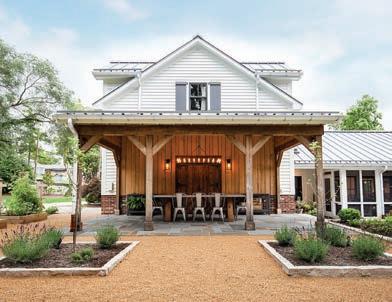
continued from page 3
In addition to benefiting environmental education, volunteering with the OLA offers significant professional development opportunities. Volunteers can gain valuable hands-on experience, develop new skills, and expand their professional networks. By working alongside seasoned professionals and engaging in various projects, volunteers can enhance their knowledge of landscaping practices, plant identification, and sustainable techniques. This experiential learning is particularly beneficial for students and newcomers to the industry, providing them with insights that can pave the way for future career opportunities.
Volunteering can help build a strong, supportive network within the landscape industry. The OLA serves as a hub for professionals to connect, share ideas, and collaborate on projects. By participating in volunteer activities, individuals can form relationships that may lead to mentorship opportunities, job placements, or collaborative ventures. This network can be invaluable, especially in an industry that often
relies on personal connections for success. Some of the best relationships have started from inside the committee meetings. OLA recognizes the benefits of networking opportunities and the ways of sharing ideas, volunteering is a great avenue to gain and grow.
The significance of volunteering in the Ohio Landscape Association extends beyond the immediate contributions made to projects and initiatives. It embodies the spirit of community, promotes environmental awareness, and enhances personal and professional growth. As volunteers dedicate their time and talents, they not only improve the landscapes of Ohio but also cultivate a culture of care and responsibility towards the environment. In a world facing increasing ecological challenges, the work done by volunteers in the OLA is more important than ever, demonstrating the powerful impact that individuals can have when they come together for a common cause. Through their efforts, volunteers are not just changing landscapes; they are shaping the future of their communities and the environment.
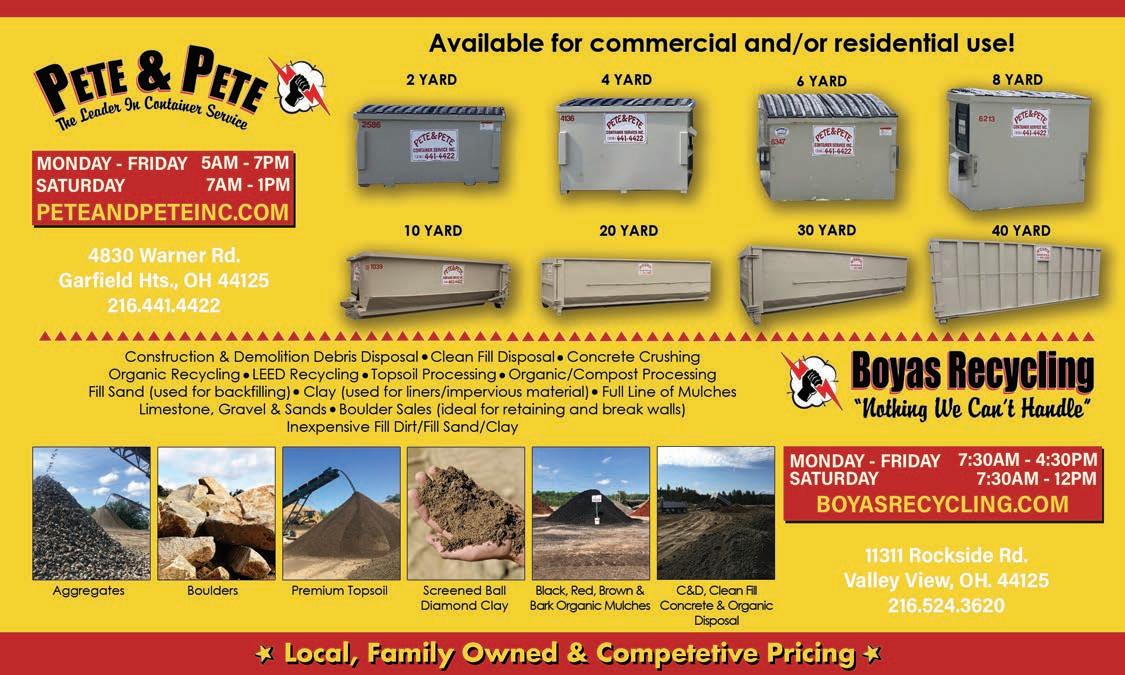



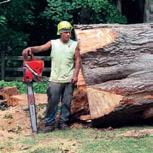

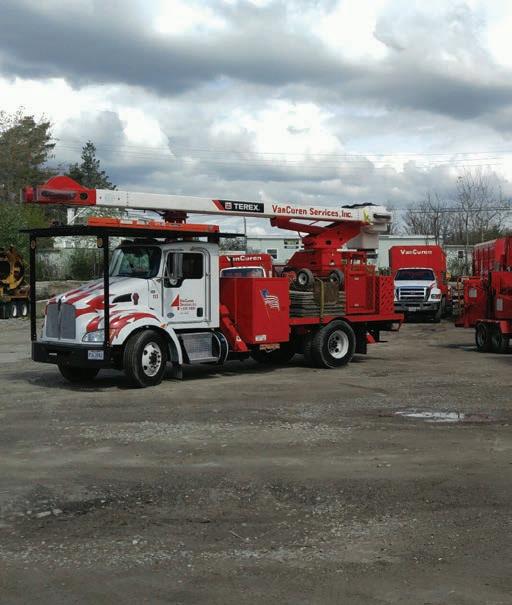



DATE & LOCATION
NE OHIO
NOVEMBER 13, 2024 MP SOLUTIONS
TRAINING FACILITY
6060 ROCKSIDE WOODS BLVD., SUITE 105
INDEPENDENCE, OH 44131
CENTRAL OHIO
DECEMBER 3, 2024
WOLF CREEK COMPANY
6700B HUNTLEY RD, COLUMBUS, OH 43229
AGENDA REGISTRATION
8:30 AM TO 9:00 AM
CLINIC
9:00 AM TO 12:00 PM
COST TO ATTEND MEMBERS: $209 NON MEMBERS: $259
REGISTER TO ATTEND BY NOVEMBER 6 (NE OH)
NOVEMBER 26 (CENTRAL OH) EVENT INFORMATION
Rob Yoho / Sandler Training powered by MP Solutions Inc.
Professionals in the Green Industry face a unique set of challenges when it comes to engaging and converting the modern buyer. To address these challenges and help you thrive in today’s competitive market, join the OLA for an insightful, highly interactive sales talk tailored exclusively for the Ohio Landscapers Association.
In this dynamic and informative session, Rob Yoho with Sandler will discuss strategies, techniques, and mindset shifts essential to winning over the modern buyer. Rob will explore and equip you with practical insights that are executable, repeatable and will boost your sales performance.
In this session Rob will cover the psychological and behavioral traits of today’s consumers. You will learn the how to:
• Building Trust and Authenticity: In an age of information overload, authenticity and trust are critical. Learn how to build and maintain trust with your customers and establish a strong, lasting reputation.
• Personalize and Focus on the Customer: The modern buyer expects personalized experiences. Understand the importance of tailoring your offerings and services to meet individual customer needs and preferences.
• Overcome Objections & Assumptions: Equip yourself with strategies to address common objections and concerns that modern buyers may raise, ensuring a smoother sales process.
• Communicate Effectively: Hone your communication skills to connect with your prospects and clients on a deeper level. Learn the art of active listening and effective storytelling to create memorable experiences.
• Measure Success: Explore key performance indicators (KPIs) and analytics to gauge the effectiveness of your sales efforts and make data-driven decisions.
For
In 2010 Rob was voted one of Cleveland’s Inside Business’s Top 25 under 35 and has worked with the Make-A-Wish Foundation and the Alzheimer’s Association of Greater Cleveland. Rob is an avid runner, golfer, & hobby farmer who lives in Lagrange, OH with his wife Amy and their three children Zander, Lyla, and Flynn. ABOUT THE PRESENTER ROB




DATE & LOCATION
NOVEMBER 20, 2024
ST. MICHAEL’S WOODSIDE 5025 EAST MILL ROAD BROADVIEW HTS., OHIO 44147
AGENDA REGISTRATION / NETWORKING FOOD / CASH BAR
6:00 PM TO 7:00 PM PROGRAM
7:00 PM TO 8:45 PM
COST TO ATTEND MEMBERS: NO CHARGE NON MEMBERS: $50
REGISTER TO ATTEND BY NOVEMBER 13, 2024
SPONSORED BY EMERALD SPONSORS


GOLD SPONSORS

SILVER SPONSORS



BRONZE SPONSORS





Many start a business without considering what the end might look like. Whether that end comes unexpectedly, by the passage of time, or through careful planning, it’s important to always build your business with a potential successor in mind. Whether you transition to an employee, a family member, a sale, or even private equity, it’s crucial to the overall success of the business.
Join us on November 20th, 2024, for an open panel discussion with industry experts and your peers. We will explore key metrics, systems, and the organizational decisions every owner should consider. Not planning to sell yet? Even if it’s not currently on your mind, understanding these metrics is essential to business success and maximizing your investment when the time comes.
Topics of discussion will include:
• Preparing Your Business for Transition
• Understanding Business Valuation
• Key Financial Metrics
• Advising and Preparing Family or Employees for a Transition
• Engaging with Prospective Buyers
• Structuring the Transaction
• Maximizing Your Investment
• Understanding EBITDA (Earnings Before Interest, Taxes, Depreciation & Amortization)
• What Private Equity Looks For
TODD PUGH / CEO AND FOUNDER ENVIROSCAPES (SOLD TO SCHILL)
At fourteen, owner Todd E. Pugh began mowing lawns to earn spending money and begin saving for college. After graduating from The Ohio State University, he incorporated his growing business and he renamed it Enviroscapes. Strong business values and ethics have enabled Enviroscapes to grow from its first $5.00 per week mowing client into a multi-million dollar landscape company that ranks in the top 2% of all landscape companies nationwide. Enviroscapes is known nationwide by its peers for award winning landscapes and being a trend setter in LEAN business practices.
DAN BARON / ATTORNEY AT BARON LAW
Dan A. Baron is an estate planning and business attorney practicing in the greater Cleveland area. He is a member of the Ohio Bar Association, West Shore Bar Association, and Cleveland Metro Bar Association. Dan’s passion for helping individuals and business owners plan for the future has stemmed from owning a landscape construction company for over 15 years. As an active member of the Green Industry, Dan has learned first-hand the importance of asset protection and succession planning. Dan also holds a five star rating on Avvo and has written articles of legal scholarship.
ED KOENIG / CO-OWNER, CEO & DESIGNER AT LIFESTYLE LANDSCAPING, INC.
Since 1982, Ed Koenig has been actively involved in all aspects of Green Industry business development including; budgeting, recruiting, production management, systems development, strategic planning, sales management, marketing management, and landscape design. Ed has spent nearly 35 years with Lifestyle Landscaping, Inc., located in North Ridgeville, Ohio, with an additional 10 years of experience at other Northeast Ohio landscape businesses.





It seems like fall came earlier this year. In early September, temperatures were cooler than usual, particularly at night. There were a few storms but, for the most part, we have been in the midst of a drought. The combination of stress and cooler temperatures mean that foliage is assuming its fall coloration earlier than usual. My neighbor’s Cornus florida (Florida Dogwood) was already turning red in early September.
Last time, I discussed a number of perennials for shade that have excellent fall foliage. This time, I will concentrate on some for sunny sites.
Several of the hardy Geraniums, G.sanguineum (Bloody Cranesbill), G.macrorrhizum (Bigroot Cranesbill), and G.
cantabrigiense (a hybrid) have leaves that turn shades of red and orange and thrive as groundcovers for sunny sites although G.macrorrhizum does prefer shade. The flowers are always shades of pink or white.
There are several species of Amsonia (Bluestar) but the one grown for its fall color is A.hubrictii. Best known for its pale blue flowers in June and growing 3 to 4 feet tall and wide, cool temperatures turn the green foliage to shades of yellow, from pale to golden depending on soil and temperature.
The Sedum that most gardeners and designers know is ‘Autumn Joy’ although ‘Autumn Fire’ is an improved cultivar. However, the species that change foliage color in the fall are groundcover types, not the upright ones. The best known of
continued on page 12
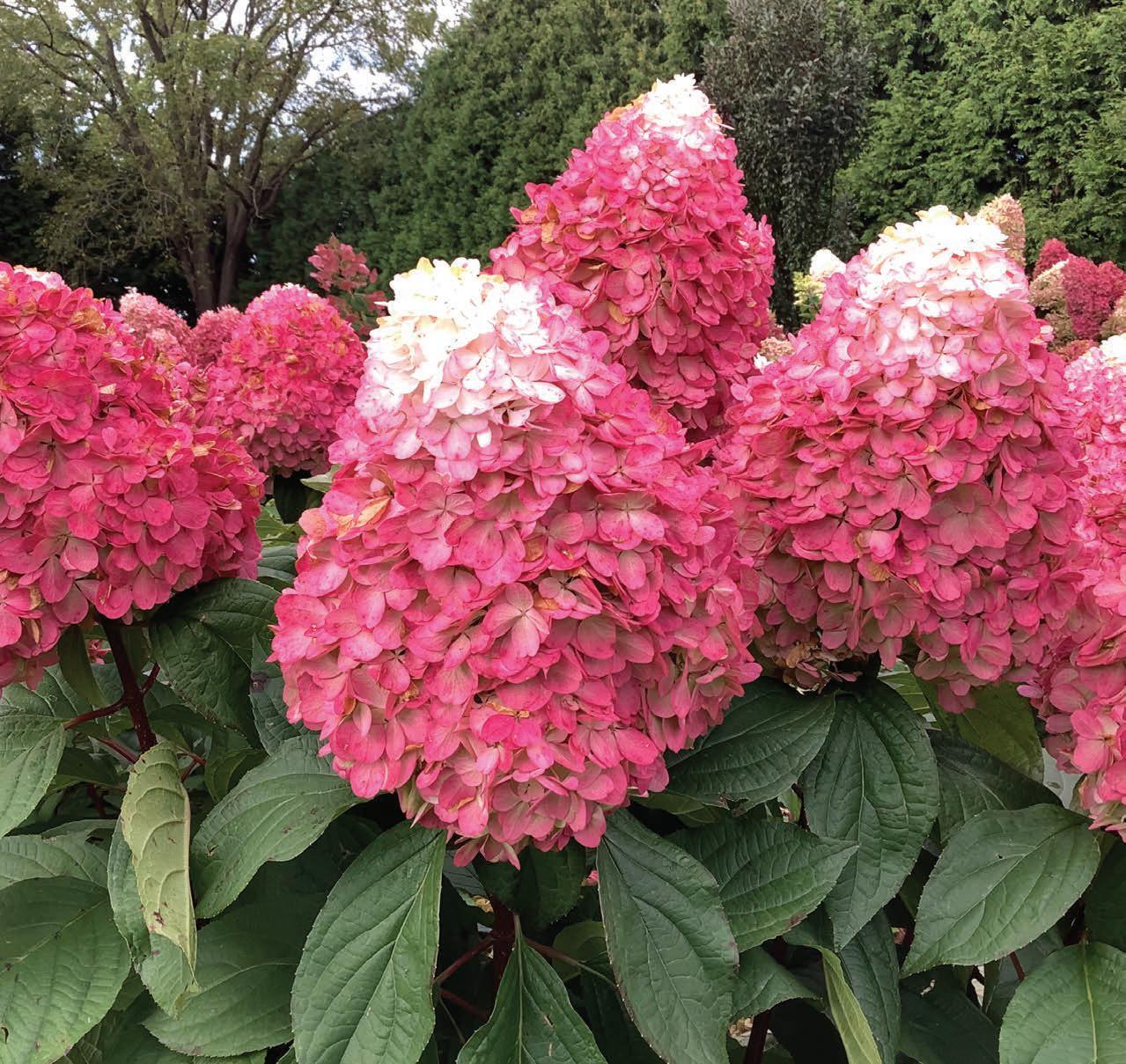
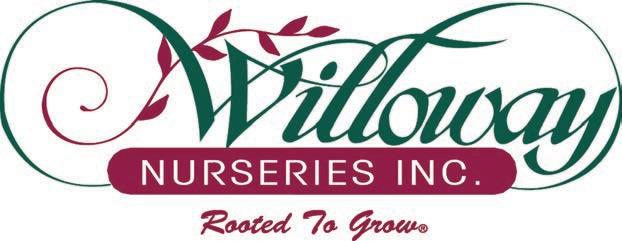

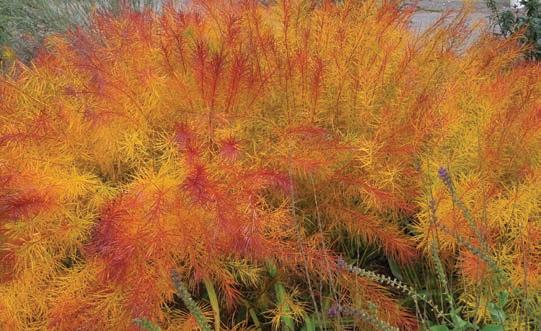



continued from page 10
these is Sedum spurium ‘Dragon’s Blood’. Growing tightly and only 4 to 6 inches high, the green foliage turns bronzy red in summer and bright to dark red in the fall. The other Sedum I use for foliage color is S.rupestre ‘Angelina’. This one has color twelve months of the year. From spring through fall, it is bright yellow. Then, in late fall and winter, it takes on tinges of orange.
Euphorbia polychroma (Cushion Spurge) should be a mainstay of the perennial garden, Its chrome-yellow flowers in early spring brighten those gray rainy days and the foliage, in the fall is an orangy-red. Sadly, it is hard to find in local nurseries. The cultivar ‘Bonfire’ supposedly has brighter fall foliage than the species but my experience has been that they are quite similar.
Most ornamental grasses wait until fall to flaunt their inflorescences but the best one for foliage color is the red switch grass, Panicum virgatum. There are several cultivars; the best for me have been ‘Shenandoah’ and ‘Rotstrahlbusch’. Both grow about three to four feet tall when in bloom.
By the time October rolls around, most gardeners have stopped gardening but if the garden is well-designed, this extra color will appear without any effort by the gardener.
Bobbie Schwartz, FAPLD, owner of Bobbie’s Green Thumb in Shaker Hts., Ohio, is a landscape designer, consultant, freelance writer, and lecturer whose specialties are perennial gardens and four season landscapes. In addition to being an Ohio Landscape Association (OLA) member, she is an active member of the Ohio Nursery and Landscape Association (ONLA) and Perennial Plant Association (PPA). Bobbie is a Past President of the Association of Professional Landscape Designers (APLD).
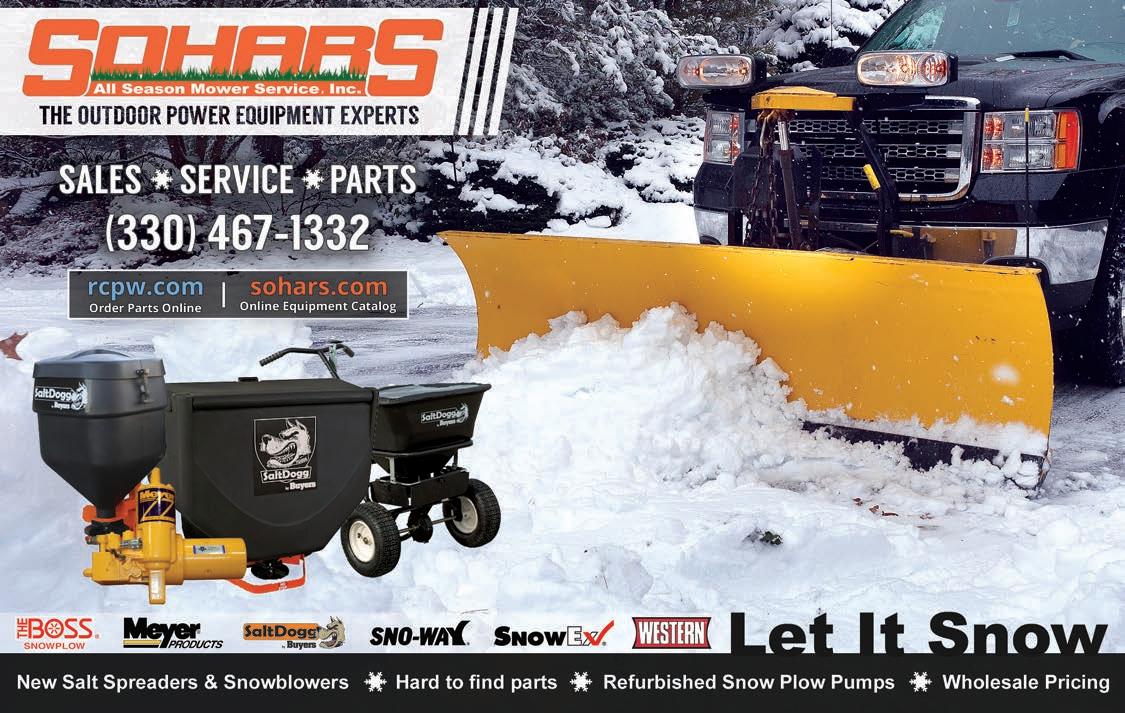

• Screened Topsoil (Stored in a hoop house on site.)
• Granite & Sandstone Boulders From 8” to 12’+ priced per ton and per piece on request. 1’-2’ granite and 2’-3’ granite available, presorted, for immediate pick up.
• Mixed Boulders (Available for immediate pick up.)
• Washed Gravel, Concrete & Mason Sand.
• Crushed Gravel & Limestone products available.

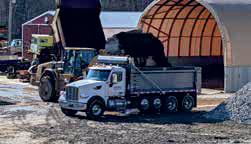
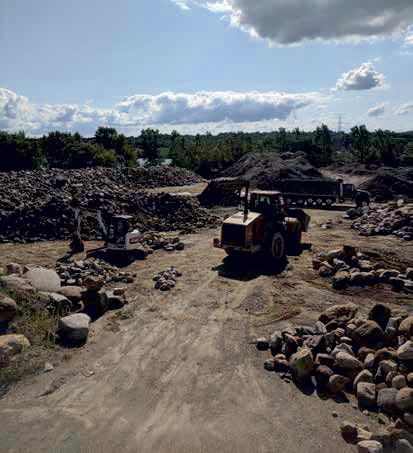


MICHAEL J. DONNELLAN M3 Wealth Management
While anyone can become vulnerable to financial exploitation, aging seniors have increasingly become new targets to financial predators. You, or someone you know, could become the victim of a growing crime in America — financial exploitation of older Americans. Criminals are targeting people of all ages, and especially older people of exploitation. As people over 50 years old hold most of the nation’s wealth, fraudsters are using new tactics to take advantage of retiring baby boomers and the growing number of older Americans.
• Appoint a trusted contact person and/or Power of Attorney
• Never give your social security number or financial information to someone you don’t know
• Be wary of providing your personal information online, clicking links or opening attachments
• Use strong passwords (that are random and cannot be construed by your username or public information about you)
• Watch out for common scams, such as lottery, IRS and romance scams
• Eliminate telemarketing calls by signing up for the National “Do Not Call” Registry at (888) 382-1222 or www. donotcall.gov
• Review your brokerage, credit card and bank statements every month
• Get written estimates from several recommended contractors before choosing one to work on your home
• Sign up for identity theft protection
• Shred unused credit card applications/financial statements
• Be vigilant with your personal and work email
continued on page 16
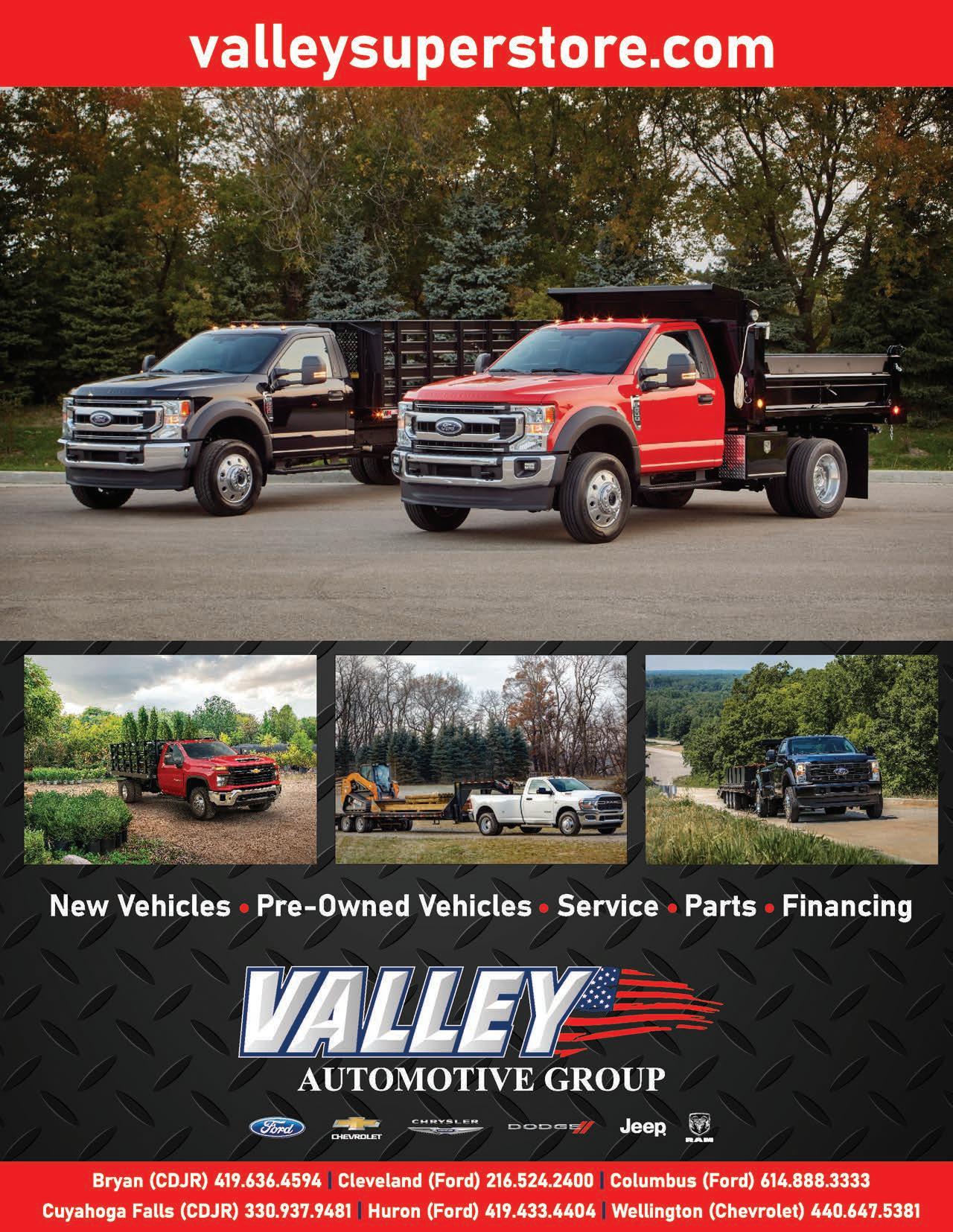

continued from page 14
• Prizes or sweepstakes that require money upfront (lottery scams)
• High-pressure tactics or offers that seem too good to be true
• Vendors who request payment in the form of a gift card
• Callers who contact you to request remote access to your device to protect one of your online accounts (e.g. Amazon)
• An increase in the number of withdrawals or checks to the same person or entity
• Increase in the number of checks written out to “cash”
• A large amount of withdrawals for smaller amounts of money
• Request to wire money for purposes that are unusual or unclear
• Bouncing checks or unpaid bills
• Seemingly unnecessary or expensive home repairs
• Sudden change in investment strategy or risk tolerance
• Sudden change of power of attorney or beneficiaries
• A caregiver who becomes overly interested in finances
• New acquaintances who promise to provide care or seem to have undue influence
• Confusion on account balances or where funds are kept
If you suspect you or a loved one has been a victim of fraud or financial abuse, call your financial professional for immediate assistance and support.
You should also:
• Cancel credit cards linked to your account
• Reset passwords on accounts and on email
• Contact local authorities, Adult Protective Services or your state attorney general (if applicable)
Federal Trade Commission: A library of educational content about fraud protection and filing a complaint. http://www.ftc.gov
Financial Industry Regulatory Authority: Fraud prevention information and resources. www.finra.org/investors/avoid-fraud
Securities and Exchange Commission: Practical consumer awareness information. www.sec.gov/investor/pubs.shtml
Scenarios illustrated are hypothetical in nature, results may vary. Investing is subject to risk which may involve loss of principal. Past performance is not indicative of future results.The M3 Wealth Management Office does not provide legal or tax advice. Consult an attorney or tax professional regarding your specific situation. The information herein is general and educational in nature and should not be considered legal or tax advice. Michael J. Donnellan specializes in stock selection and retirement planning. Feel free to contact him with any questions or comments at the M3 Wealth Management office at 17601 W. 130th Street – Suite 1 in North Royalton, Ohio. Phone number (440) 652-6370 / Email: donnellan@ m3wealthmanagement.com Securities and advisory services offered through L.M. Kohn & Company Registered Broker/Dealer Member FINRA/SIPC/ MSRB10151 Carver Rd. Suite 100 – Cincinnati, Ohio 45242 (800) 478-0788











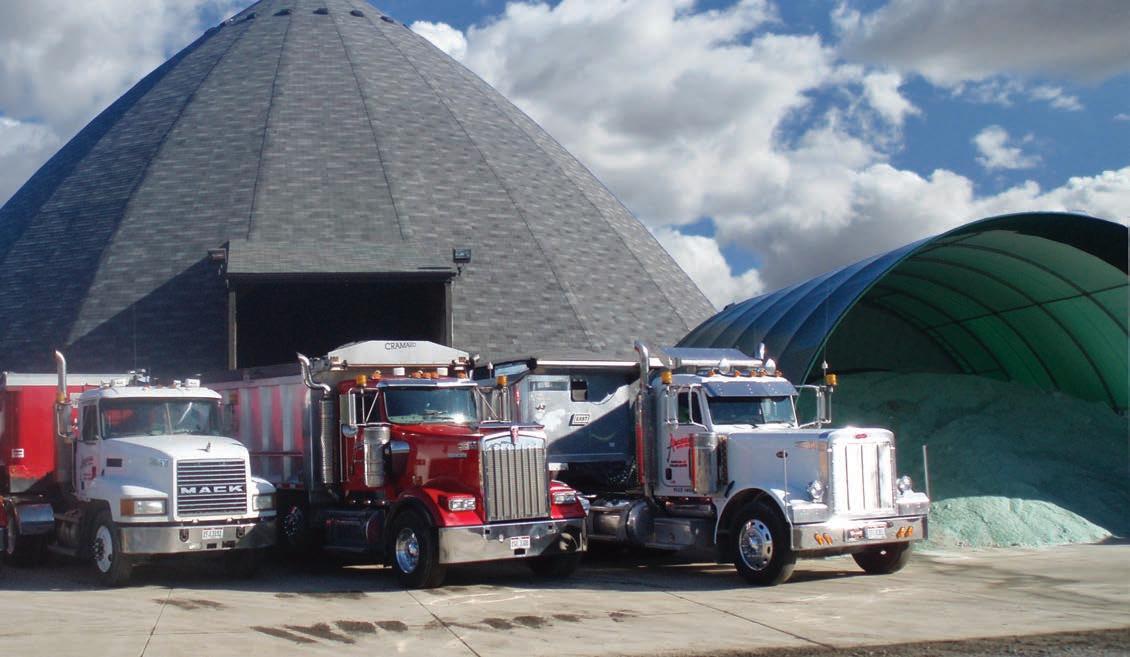

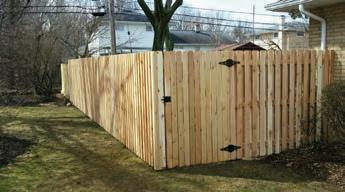
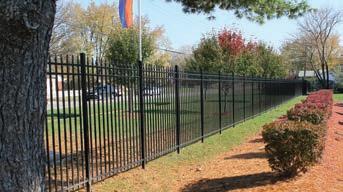
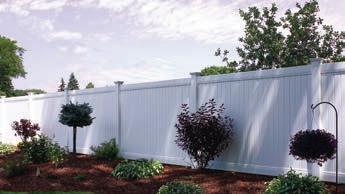



Trenching and excavation work can be hazardous if not properly managed. The Occupational Safety and Health Administration (OSHA) has specific safety requirements to ensure the safety of workers engaged in these activities. OSHA regulations 29 CFR 1926.651 and 1926.652 identify the specific excavation and trenching requirements. Although these regulations pertain to OSHA’s Construction Standard, they can be used in other industries, so taking the necessary precautions regardless of your organization is key to safe working conditions.
An excavation refers to any man-made cut, cavity, trench or depression in the earth’s surface formed by soil removal. A trench is defined as a narrow excavation (in relation to its length) made below the surface of the ground. The hazards associated with both activities are dangerous, and many times can result in a fatality. Cave-ins are considered the most common due to the weight of the soil. In fact, one cubic yard of soil can weigh as much as a car (around 4,000 pounds or 2 tons)!! Other hazards associated with trenching and excavation include falling loads, hazardous atmospheres and incidents involving mobile equipment.
Here are some of the main safety requirements outlined by OSHA to help keep workers safe when trenching and excavating.
Protective Systems – Various protective measures have been developed and can be used by employers in order to help prevent cave-ins.
• Sloping – Cutting back the trench wall at an angle inclined away from the excavation.
• Benching – Excavating the sides to form one or a series of horizontal levels or steps, usually with vertical or nearvertical surfaces between levels.
• Shoring – This requires installing hydraulics or other supports to prevent soil movement.
• Shielding – Shielding is the most complex, but it basically uses trench boxes or other types of supports based on soil analysis and conditions.
continued on page 20
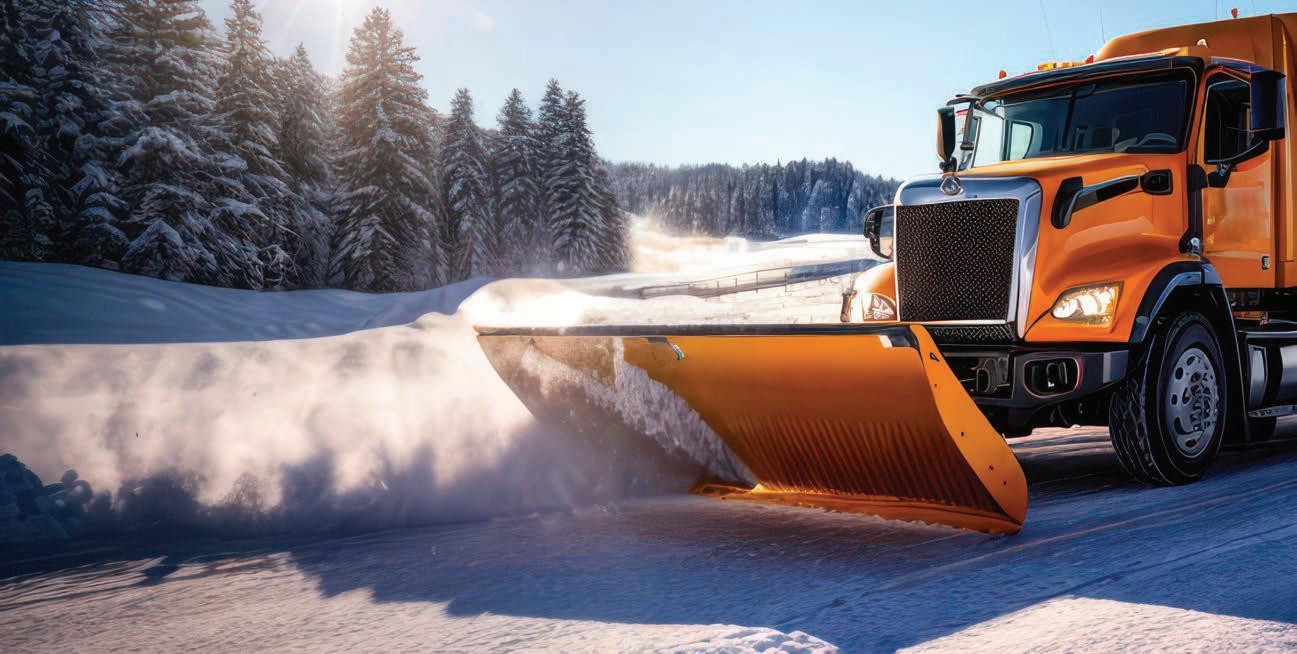

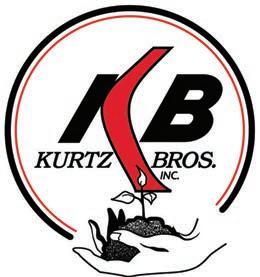

continued from page 18
Competent Person – OSHA requires a competent person to be present at the work site if trenching or excavation operations are to be conducted. The competent person must be knowledgeable to evaluate the work area for hazards, including:
• Conducting site inspections.
• Designing structural ramps.
• Classifying soil to recommend appropriate protective systems. Soil conditions are categorized as Stable Rock, Type A, Type B and Type C.
• Identifying existing, predictable or unsanitary risks such as monitoring water removal.
• Have the approval to take corrective actions or authority to eliminate hazardous conditions.
Access and Egress – These are steps OSHA requires organizations to follow for access and egress when projects require trenching and excavating:
• Employers must provide ladders, steps, ramps or other safe means of egress when working in trenches of 4 feet or more.
• The means of egress must be located so employees do not have to travel more than 25 feet laterally within the trench.
• Structural ramps used in trenches must be designed by a competent person and be uniform in thickness and joined in a manner to prevent tripping or displacement.
Other best practices and requirements to conduct before or during the excavation include:
• Contacting utility companies to locate and mark underground utilities.
• Per form daily inspection of trenches, excavations and protective systems before work begins and throughout the shift.
• Periodically check the trench for hazardous atmospheres such as low oxygen, hazardous fumes and toxic gases when depths are 4 feet or greater.
• Fall protection is required when workers are near the edge
of an excavation 6 feet or deeper for construction and 4 feet or deeper for general industry.
• Performing training on trenching and excavation work, including recognizing hazards, properly using protective systems, PPE and emergency response procedures.
• Keep heavy equipment away from trench edges and do not work under suspended or raised loads or materials.
• Inspect trenches at the start of each shift, following a rainstorm or water intrusion and other occurrences that could have changed conditions in the trench.
• Keep excavated soil and other materials at least 2 feet from the trench to prevent cave-ins.
These are not all the OSHA requirements for trenching and excavating, but you can find them at 29 CFR 1926 Subpart P or www.osha.gov/sites/default/files/publications/osha2226. pdf for comprehensive guidance specific to your operations and locations. Local regulations may have additional requirements, so be sure to research those.
Because of the highly hazardous nature of trenching and excavation work, OSHA has developed a National Emphasis Program (NEP) which describes the policies and procedures for identifying and reducing hazards that cause or may cause serious injuries and fatalities during trenching and excavation operations (https://www.osha.gov/sites/default/ files/enforcement/directives/CPL-02-00-161_0.pdf). If your organization performs work requiring these activities, review the NEP because it offers valuable information on keeping employees safe and your company compliant.
This article was provided by Sedgwick program manager, Dominic Potina. For more than 50 years, Sedgwick has been helping employers answer virtually every question there is about workers’ compensation. Sedwick is the administrator for the OLA’s group workers’ compensation plan. If you have any questions, contact Domenic at 614-579-4723 or dominic.potina@sedgwick.com



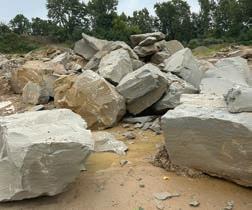


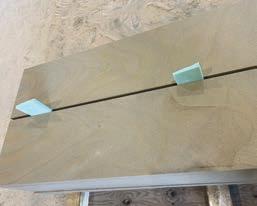

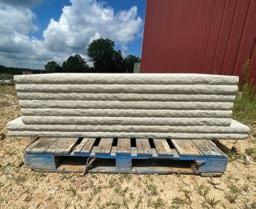



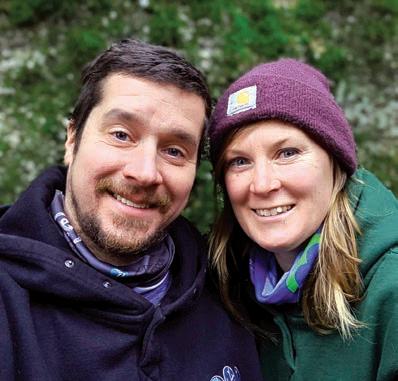
JIM FUNAI, PhD
Cuyahoga Community College
SHELLEY FUNAI, LIC
Stan Hywet Hall and Gardens
This month, let’s look at one of the oldest living trees. At 500 years old, it is still a young specimen, but it can reach over 1,000 years old in its native habitat. Swiss Stone Pine is in the white pine group, which means it is a five-needle pine, just like our native Pinus strobus.
With a vast native range in the mountains of central Europe and southern Asia, they are heavily populated in the Alps and then again to the east in the Carpathian Mountains. Being a mountain species, it prefers sandy-loam soil but is remarkably tolerant to many soil types, except for dense clay/wet soils.
Like many pines, it is best in full sun but will do well with some light shade. Don’t give it too much shade, or it will grow too thin and gangly. Expect the tree to slowly grow to a height of 25 to 30 feet and a width of 10 to 15 feet.
We’d describe the overall habit as a dense, pyramidal shape with ascending branches that make a grand statement in the landscape. Often, we find this planted as a stand-alone specimen, but we also found it to look fabulous in a grouping with large flowering shrubs and mixed evergreens.
As we mentioned, these are long-living trees, and because of that, they can reach heights of 80-100 feet with massive trunk diameters (DBH) of 48-60 inches. It takes over 100 years to reach those heights, as they have been recorded in nature to take over 30 years to reach four feet tall from seed.
Cones take two full years to mature and, after age 50 or so, will produce an edible seed inside that is dispersed by a relative of the crow in their native habitat.
A famous human use for the seed in its native habitat, especially in the Northern Italian Alps (Dolomites), is as “pine nuts,” which are a crucial ingredient in a good basil pesto. Once you realize how long these trees take to produce a crop of pine nuts, you start to understand why they are so darn expensive at the grocery store. continued on page 24

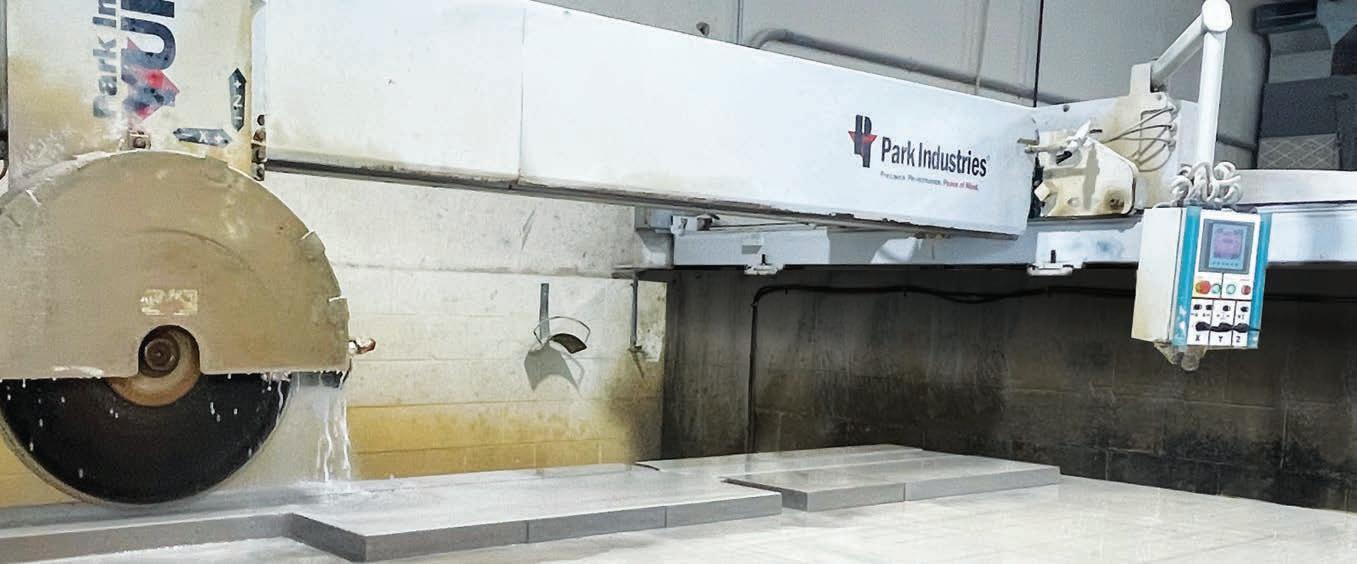

Our team has mastered the technique of stone cutting, specializing in fabricating:
• Amherst Gray Sandstone
• Amherst Buff Sandstone
• Indiana Limestone
• Briar Hill Sandstone
• Harvest Gold Sandstone
• Blue Stone & Blue Water Stone
• Travertine
... And More


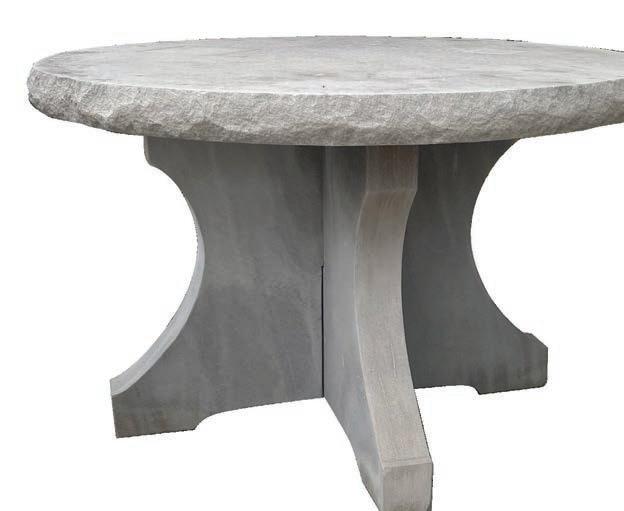

continued from page 22
You know that we always like to explore why a plant is called what it is, and this one is a case of combining languages. In Northern Italy, where this is a prominent species in the Dolomites, the name is “pin cembro” which is a nod to the town of Cembra, north of Trento within the Italian Alps. So, the name became Pinus cembra, which reflects the Italian common name. So, why do the Swiss get the nod in our common name? In Switzerland, this is also a significant alpine tree, and it is named Arolla Pine. Arolla is a town just northwest of the Matterhorn, one of the most famous peaks in the Alps. The “stone” part pretty much refers to the fact that these trees seemingly grow out of the rocks of the mountain. They are a key part of stabilizing the soils and are heavily used in reforestation efforts through the Alps.
As mentioned above, straight species are a beautiful addition for landscape use. However, if you can find some cultivars in the market, there are some solid options:
‘Chalet’ has a bluer hue to the leaves, which pops in the landscape. Its habit is denser and narrower than that of straight species and does excellent in tight urban gardens.
‘Silver Whispers’ leaves have brighter white stomata lines, which make them appear silvery in the sun. We’ve also noticed the
cones are a brighter violet color compared to the deeper purply color in straight species. The color combo of these cones and leaves is stunning.
‘Stricta’ seems to hold an even tighter columnar form, making it a great option for really narrow spaces.
‘Columnaris’ is not quite as tight as ‘Stricta’ but is still a good option for tighter spaces.
We hope you’ll consider this beautiful addition to our landscapes in the near future. One benefit of using this tree is exceptional resistance to insect and disease issues. We don’t have major issues with pine rust yet in our part of the country, but it is likely to work its way from the west to us, and when it does, these trees are nearly rust proof!
Jim Funai, PhD, is full-time faculty at Cuyahoga Community College, a NALP accredited associate of applied science in hoticulture degree program. He has a PhD in Landscape Engineering and Forestry and is a Licensed Arborist. Shelley Funai is Grounds Manager at Stan Hywett Hall and Gardens in Akron, Ohio, which offers a historic estate designed by Warren H. Manning and a beautiful manor house museum. She is Landscape Industry Certified in Ornamental Plant Care.


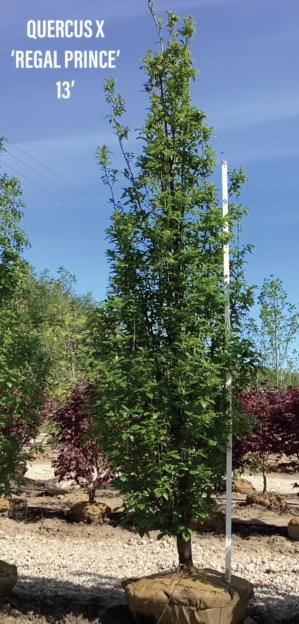






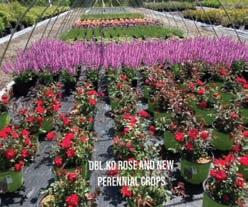
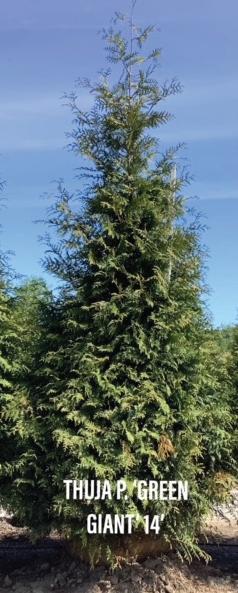

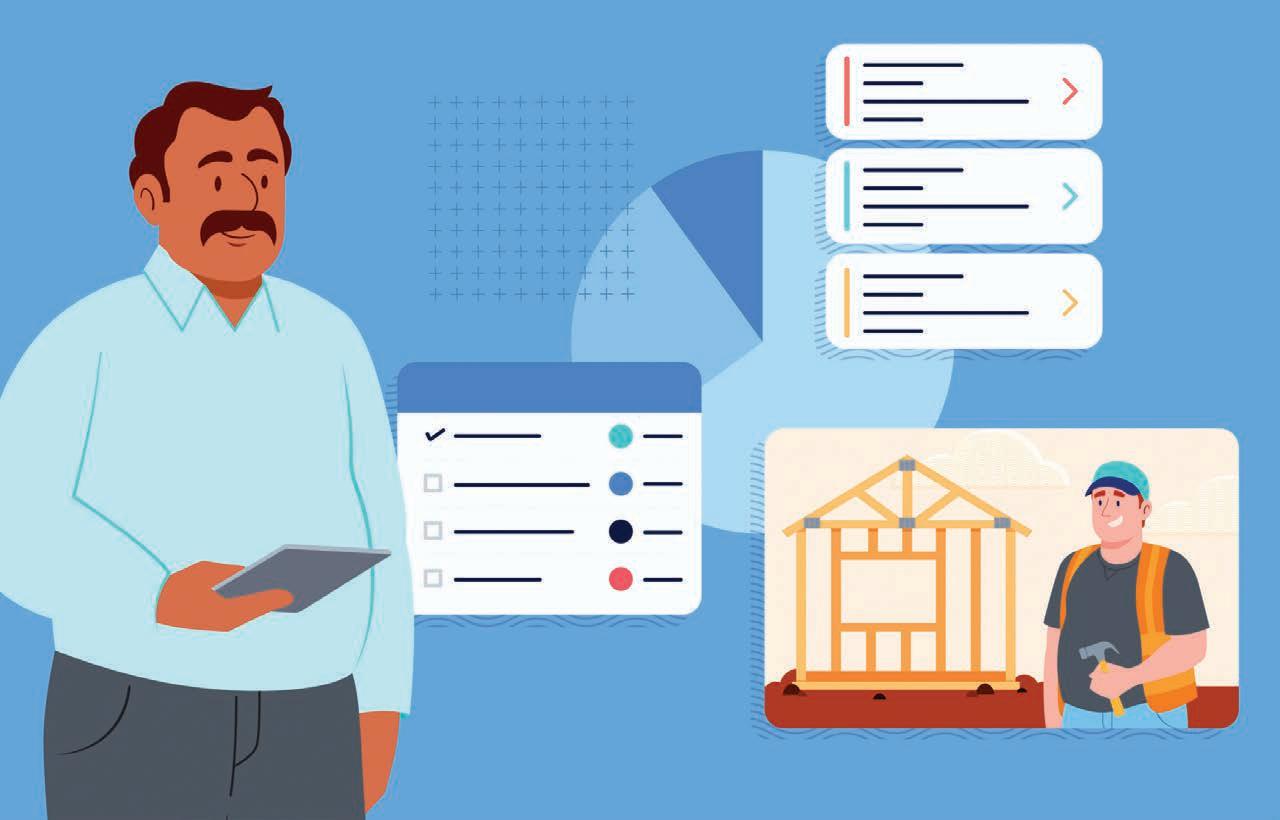
Your employees can make or break your business, and the same goes for the subcontractors you hire. Your goal should be to find quality subcontractors and strengthen relationships so you can rely on them for many projects.
A subcontractor is a company or individual hired by a contractor to perform a specific task or set of tasks. Subcontractors are typically hired for their specialized skills or expertise in a particular area. They can help to ensure that each aspect of a process is executed to a high standard.
Specialized Expertise: Since subcontractors are focused on specific areas, they have the training, knowledge and experience to perform their tasks to a high level. Subcontractors typically have years of experience in their respective fields, which enables them to identify potential problems and take care of them.
Cost-effectiveness: Subcontractors are typically responsible for their own labor, materials and equipment, which can help to reduce costs. As a contractor, you can solicit bids from multiple subs and choose the one providing the best value.
Resource Flexibility: Subcontractors provide flexibility because you can hire them on an as-needed basis rather than maintaining a large in-house team. Subcontractors are particularly beneficial for small contractors or those with fluctuating workloads because they allow those businesses to scale up or down as needed.
Time Efficiency: Since subcontractors provide expertise in a specific area, they can complete their work faster and with fewer errors. This can speed up the process and ensure each step of the project is completed on time. Typically, they can focus on their own responsibilities without being distracted by other’s work.
Quality subcontractors are crucial for the success of your projects, and building relationships with reliable subcontractors can help. Here are some attributes you should look for when hiring subcontractors.
continued on page 28





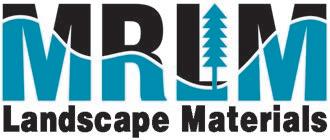







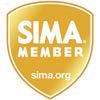

continued from page 26
Experience & Expertise: Subcontractors with experience and expertise in their respective fields can provide quality work, efficiency and reliability. Experienced subcontractors have likely worked on similar projects and can identify potential problems before they arise, which helps prevent delays and overruns.
Resources & Capacity: Each subcontractor must have adequate resources, such as labor, materials and equipment, to complete the job to a high standard. Capacity is also important to consider because the subcontractor must be able to take on the work and complete it.
Communication & Responsiveness: Subcontractors are external parties hired to help with a specific task, so they aren’t as familiar with your company’s operations or expectations. Effective communication and responsiveness help ensure both parties have an understanding of the scope of work, timeline, budget and other important details.
Compatibility & Cultural Fit: These factors can significantly impact the success of a project. When subcontractors are hired, they become part of the team, and their actions and decisions can affect the outcome. If a subcontractor’s values are not aligned with your business’s, it can lead to tension, misunderstandings and even conflict.
Pricing & Cost-effectiveness: When hiring a subcontractor, these factors are important to consider because they directly impact the financial aspect of your project.
Availability & Timeliness: These factors can impact your timeline and ability to meet deadlines. If a subcontractor is not available when needed or can’t complete the work on time, it can cause delays. This is more problematic if the subcontractor’s work is a crucial part of your project and needs to be completed before other tasks can proceed.
Most businesses rely on subcontractors to some degree, so it’s important that you have a process for hiring quality people.
This is vital to ensure that both parties have a clear understanding of what’s expected, what work needs to be performed and who’s responsible for each aspect of it. Clearly defining requirements can minimize misunderstandings, errors and delays.
Your initial contract should set out the project requirements, including a detailed description of the work and a project timeline or deadlines that must be met. Roles and responsibilities should
also be clearly defined in the contract, with an explanation of who’s responsible for providing materials and equipment and who’s responsible for managing the project.
Check Recommendations & Referrals: Recommendations and referrals provide valuable insight into a subcontractor’s past performance and can help to determine whether it’s a good fit for a project. These can come from a variety of sources, including previous clients, industry associations and other people in the construction industry. These sources can provide information about the subcontractor’s work quality, reliability, communication skills and professionalism.
Verify Licenses, Insurance & Certifications: This is an important step when hiring a subcontractor because it helps ensure the business is qualified, properly insured and legally authorized to do the job. Licenses can indicate a subcontractor has met qualifications and standards set by the licensing authority, including education, training and experience.
Insurance protects the subcontractor and your business in the event of an accident. A company should verify that the subcontractor has adequate insurance for liability and workers’ compensation. Certifications should also be considered to confirm the subcontractor has the necessary expertise.
Evaluate Track Record & Experience: This helps determine the subcontractor’s ability to deliver high-quality work and effectively manage a project. A subcontractor’s track record refers to past performance on similar projects. This can include factors such as its ability to meet deadlines, the quality of its work and overall reliability.
Experience is also an important consideration, especially in specialized areas of construction. By evaluating experience, the company can confirm that the subcontractor has the expertise to do the task.
Maintain Open Communication: Communication helps to establish a clear and successful working relationship between two parties. Effective subcontractor communication should be established from the beginning of a project. This includes defining the scope of work, project timelines, milestones and project goals.
The communication should be ongoing throughout the project, with regular check-ins, progress reports and meetings to discuss concerns or issues. Open communication helps to build trust and rapport between the company and the subcontractor and produces a more collaborative working relationship.
continued on page 30
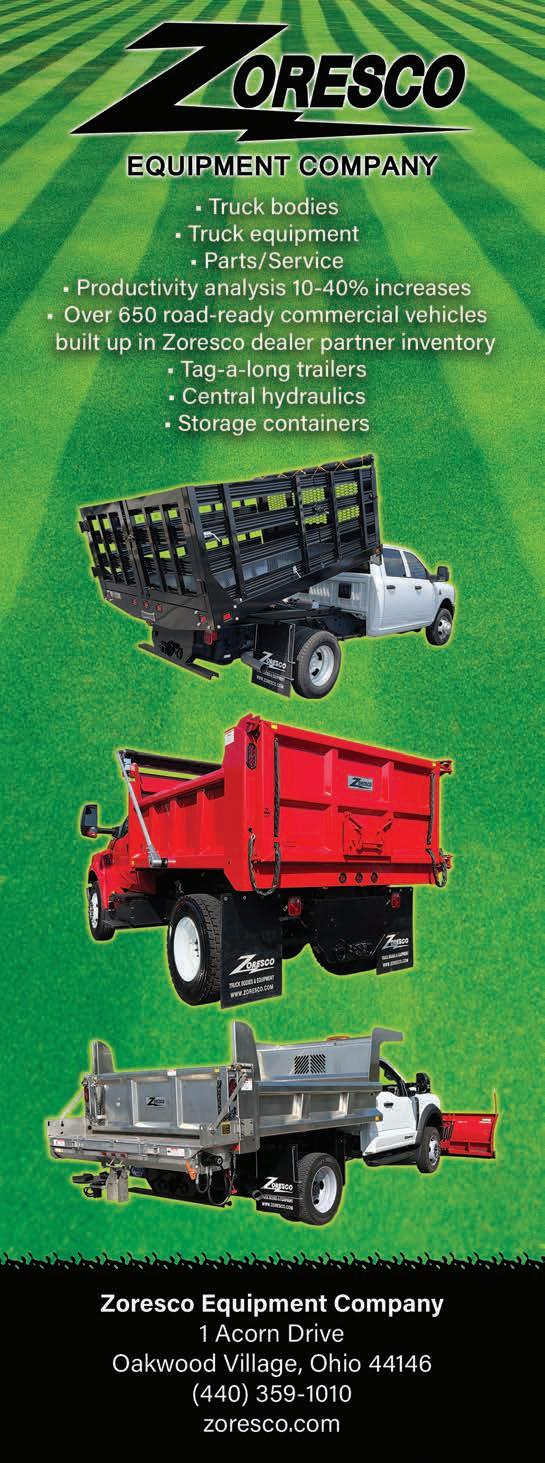

Monitor Progress & Quality: This ensures that the project is progressing as planned and that the work is being performed to a high standard. Monitoring progress means regularly checking in on the subcontractor’s work to ensure it’s meeting project deadlines. Monitoring quality means checking that the subcontractor is meeting standards. This includes conducting regular inspections, reviewing completed work and checking for defects or errors.
Document Everything: Documentation provides a clear record of the project’s progress, decisions and agreements so there are fewer misunderstandings and disputes between the two parties. This should include all contracts, change orders and scheduling conflict changes. Good documentation also provides a reference for future projects.
By implementing the proper steps, you can select the right team for your projects and ensure it has the right skills and experience for the job. Here are four steps to follow:
1.
To review a subcontractor’s past work, you can ask for a list of references of clients it’s worked with before. You can even contact the references to ask about work experience and reliability. This can give you an idea of the satisfaction level of past clients. You can also check online review sites like Yelp, Google Reviews and Angi to see the reputation of a subcontractor.
Send your subcontractor a detailed description of the scope of work required for your project and ask for a timeline and cost estimate. You can use these bid proposals to compare the qualifications and pricing of different subcontractors to pick the best option.
Documents protect your business and ensure each subcontractor can perform the task. You’ll want to keep a record of its W-9 form, certificate of insurance, licenses and certifications and the contract agreement between your company and the subcontractor. It’s a good idea to store them in secure document storage software so anyone on your team can reference them digitally.
Hiring unreliable subcontractors can affect your company’s success and even tarnish your reputation. Make sure you avoid these things when hiring subcontractors.
It’s important to conduct sufficient due diligence to check for the necessary skills, experience and qualifications of subcontractors. Insufficient due diligence can lead to poor-quality work, safety risks, legal risks and reputational damage. To avoid this, you should verify the subcontractor’s credentials, review licenses and insurance and check references and work history.
Clear communication is vital when managing subcontractors to ensure that everyone involved in the project understands their roles and expectations. Without clear communication, there can be misunderstandings, cost overruns, poor-quality work and safety risks. Make sure to clearly define requirements, timelines and budgets with the subcontractor. continued from page 28
Vetting qualifications can include verifying licenses and certifications and checking insurance coverage. You can check with your state or local licensing board to verify the subcontractor’s license status. You’ll also want to check that the subcontractor has liability insurance and workers’ compensation to protect you from liability in case of accidents.


Through
Poor Contractual Agreements: To mitigate disputes and legal issues, confirm that everyone involved in a project understands their rights and obligations. By establishing clear and comprehensive subcontractor agreements, you can ensure the project is completed successfully and on time. Clearly set out project requirements, timelines, payment terms and quality standards.


and financial loss. Verify each subcontractor’s financial stability by reviewing credit history, financial statements and references.
Through a national network of volunteers, SnowCare for Troops provides complimentary snow removal services to eligible military families with a deployed service member.
Ignoring Insurance & Liability Coverage: It’s important to verify that subcontractors have adequate insurance and liability coverage when hiring them for a project. Failure to do so can result in legal liability, financial loss, project delays and damage to your company’s reputation. This includes verifying that subcontractors have the necessary insurance coverage, such as general liability insurance and workers’ compensation.
Lack of Oversight & Monitoring: Monitoring subcontractors is crucial to avoid poor-quality work, safety issues and legal liability. Make sure to establish clear lines of communication, monitor progress throughout, address issues in a timely manner and ensure subcontractors follow safety protocols.
Inadequate Financial Stability Assessment: By failing to do a financial stability assessment, your business risks project delays
Poor Project Planning & Coordination: Well-planned and coordinated projects are crucial when working with subcontractors. You can accomplish this by developing a clear project plan that outlines requirements, quality standards, timelines and responsibilities. You should also maintain open lines of communication throughout the project to address issues.
Neglecting to Maintain Documentation: It’s important to have clear documentation when managing subcontractors. If you fail to do so, there can be disputes and miscommunications. Ensure that documentation is updated with any changes or issues that arise during the project.
This article was written by Jen L’Estrange - a fanatic when it comes to helping companies clearly define their people strategies and achieve their change goals - and founder/managing director of Red Clover, an outsource HR firm. It appeared as part of the Buildertrend webblog, located at www.buildertrend. com/blog. Builder trend helps you work simpler, see more growth and calm the chaos in your business.

Sponsored & Hosted by


EVENT INFORMATION
DATE & LOCATION
NOVEMBER 7, 2024
VAN NESS STONE, INC. 10500 KINSMAN ROAD NEWBURY, OHIO 44065
AGENDA
REGISTRATION/BREAKFAST
8:30AM - 9:00AM
CLINIC
9:00AM - 4:00PM
LUNCH (INCLUDED)
12:15PM - 1:00PM
COST MEMBERS
NON MEMBERS
With the proper tools and the right skills, you can dress stone on the job and save money using age-old techniques. Are you struggling to rockface 2, 2.5 & 3 inch sandstone? Come to this class to learn the proper way. Join us for this hands-on clinic where you will learn rockfacing, dressing, splitting and tooling. You will learn the difference between sandstone and limestone, and their different varieties and grade that require different techniques; as well as the skills for handling barnstone.
A continental breakfast and lunch will be included with each paid registration. Registered participants will also have the opportunity to purchase quality stoneworking tools in advance of the clinic. REGISTER EARLY - class size is limited to 24 participants and will sell out quickly!
INSTRUCTED BY CHRIS PASCOE / CARVINGS BY CHRIS
Educated at Bath Tech United Kingdom’s City & Guilds London Masonry Institute, Chris Pascoe is a Master Stone Mason with over 35 years of experience in the stone industry. He grew up and studied in England before traveling to the US to work on the Cathedral St. John Devine in New York City. In addition to his stone work, Chris recently branched off applying his artisan abilities to a new medium - chainsaw carving. He’s participated in numerous Home & Garden Expos and has been featured on both New Day Cleveland and the Magnolia Network’s Barnwood Builders.




EVENT INFORMATION
DATE & LOCATION
DECEMBER 5, 2024
SECREST ARBORETUM
WELCOME & EDUCATION CTR.
2122 WILLIAMS RD., WOOSTER, OH 44691
AGENDA
REGISTRATION / BREAKFAST
8:30AM - 9:00AM
CLINIC
9:00AM - 12:00PM
COST
MEMBERS
NON MEMBERS

The most important landscape maintenance practice is the control of plant size by the correct method of pruning to retain the natural branching characteristics of the plants and integrity of the landscape design. Dormant Pruning of Landscape Plants is a half-day, hands-on clinic and a timely training opportunity for you and your crews to get back to the basics and learn the proper way to prune in time for winter and early spring pruning. This year, we’re happy to announce that we will be holding our clinic at Secrest Arboretum, offering attendees the opportunity to hone their skills using a vast amount of plant material.
GENERAL INFORMATION: This seminar will include a lecture as well as hands-on training. Attendees will need to bring their own notepad and pen, hand pruning shears, a small pruning saw, and long handle lopping shears, and will need to dress appropriately for outdoor practical training.
INSTRUCTED BY
BENJAMIN STAYER / LOCAL MANAGER & ARBORIST REPRESENTATIVE BARTLETT TREE EXPERTS
Ben graduated from the University of Toledo in 2013 with a Bachelor’s degree in Environmental Studies. He started his arboriculture career in 2014 with Bartlett Tree Experts in State College, Pennsylvania. Ben has held positions as Arborist Climber, Crew Leader and Plant Health Care Specialist. He was also a Local Office Safety Coordinator prior to returning to Ohio and becoming Local Manager and Arborist Representative in 2023. An ISA certified arborist, Ben is also a certified pesticide applicator.

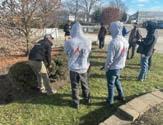

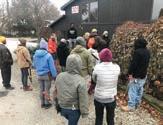

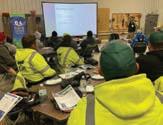
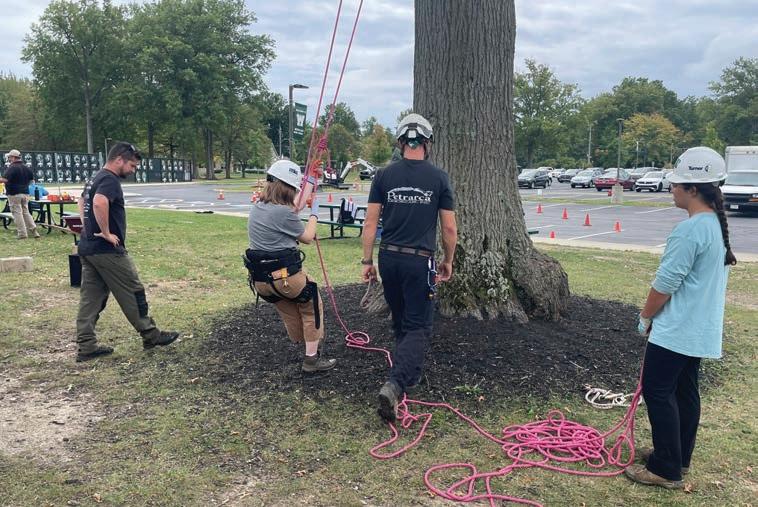
It is always exciting to see young people express an interest in the Green Industry!
Last year, the OLA’s Workforce Development Committee developed a relationship with the Horticulture Sciences class at Westlake High School. This was thanks in a large part to Brian Knauer and The Pattie Group who had previously assisted Melissa Barth, the class’s instructor. With their direction, a group of OLA members assisted Westlake students in revitalizing their courtyard garden which had suffered immensely during COVID due to the fact that no one was present on campus to care for it.
This year, based on the success and interest shown during the previous endeavor, Ms. Barth and her students decided that they would like to compete in the Ohio High School Landscape Olympics (OHLO) - an event that tests students’ skills through hands-on, competitive events designed by industry professionals - and reached out to the OLA for help in preparing for this annual competition.
On Friday, September 27th, OLA member companies joined in this hands-on training event, held on the Westlake High
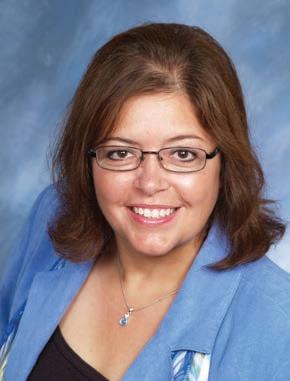
SANDY MUNLEY
Executive Director / OLA
School campus, including employees from The Pattie Group, Turfscape, Kurtz Bros., Inc., Brian Kyles. Willoway Nurseries, Oberfields, Cuyahoga Community College, and Petrarca Landcare, Inc. A huge thank you to all of you for donating your time, expertise and resources!
While I was unable to attend the event due to prior association obligations, the OLA’s Associate Director, Rick Doll, was onhand to document the day and had nothing but positive things to say! In his words...
For many of these students, this may have been the first time that they were exposed to some of the concepts being taught. While a few struggled early on - and, rightfully so - seeing the light bulb go off in their head, or seeing the look a happiness and accomplishment on their faces once they completed a task successfully for the first time was well worth the effort the committee put into holding this event. It was really promising to see kids at this age get noticeably excited about the work they were performing and their opportunity to compete.
Additionally, the committee members and volunteers who took part in the training process really did an exceptional job.
The Ohio Landscape Association is delighted
REGULAR MEMBERS
McNeill & Sons Tree Service
656 W. Turkeyfoot Lake Rd. Akron, OH 44319 (330) 606-1126
Garrett McNeill
ASSOCIATE MEMBERS
Split Rail Nursery Supply 2939 Kingston Pike Circleville, OH 43113 (330) 421-1234
Wendy Moore
Olde Heritage Stoneworks 13680 Old State Rd. Middlefield, OH 44062 (440) 537-2184
Nate Miller
While some of them are teachers, and others take an active roll in training within their own organizations, it’s certainly no easy task to present new information to a group of high school students you’re just meeting for the first time. Our members did so with patience and with an attitude that kept all of the students engaged throughout the entire day. Kudos to them!
While I am sure the students learned invaluable skills from all of our participating companies, this just goes to show that this kind of mentorship truly makes a difference in fostering the next generation of horticulturists and nursery, and landscape professionals! We certainly hope Westlake’s program does well at this year’s event, but we also want YOU to have the best opportunity to succeed. Showing our youth a path towards success in this industry is a great start and why our Workforce Development Committee will continue to look to be a part of opportunities such as this!
If you know of a high school, vocational school, or any other program that would benefit from partnering with the OLA, please reach out to me at sandy@ohiolandscapers.org.




